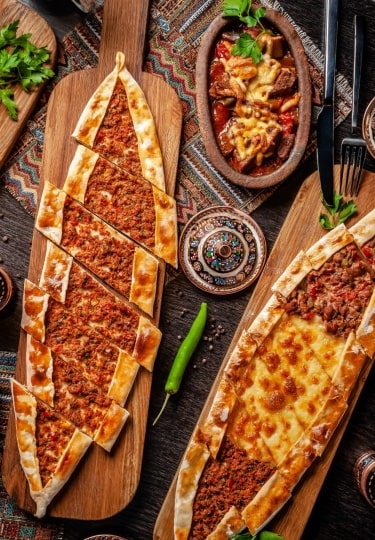Turkey is a vast country, for centuries a melting pot of many peoples and cultures. Its cuisine is correspondingly diverse, leaving visitors with a delicious array of food to eat in Istanbul.
The variety is wonderful, from simple breads to complex pastries that take incredible skill to perfect. The city has a rich choice of restaurants and an even more bewildering range of street foods.
Wherever you go, you’ll find good ingredients, lovingly prepared. This is a city that really loves its food.
Here are the 18 best dishes to eat in Istanbul.
Simit
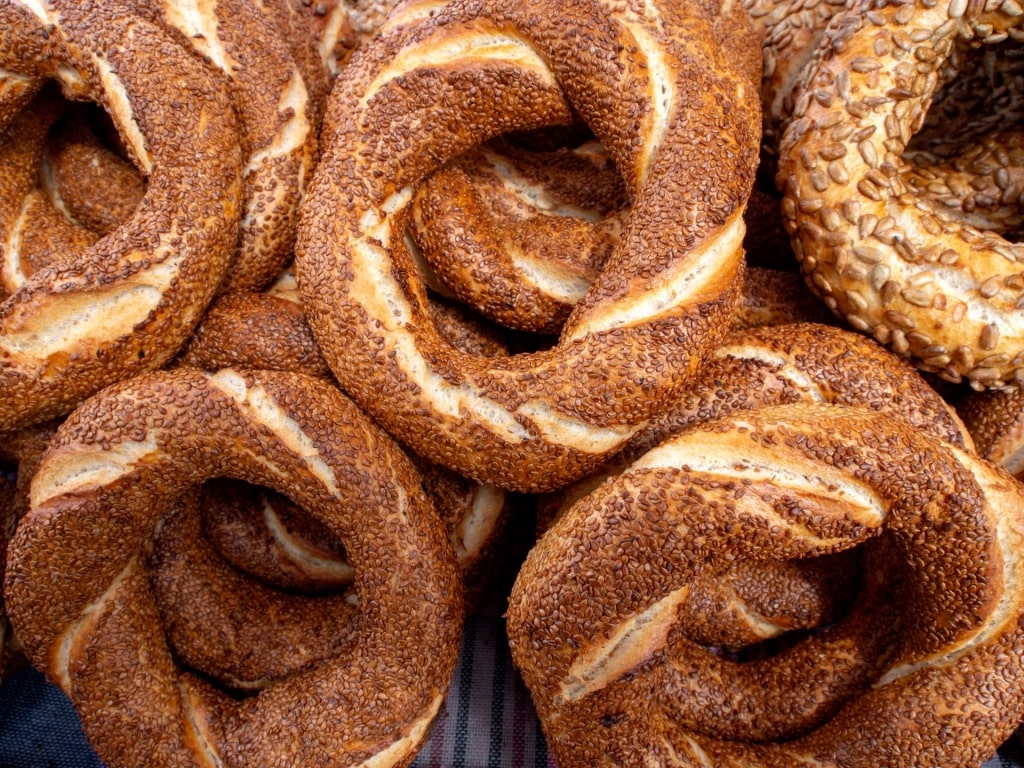
Simit
Simit is the Turkish version of a sesame bagel. It’s a popular street food in Istanbul, sold from carts or by vendors who carry towers of fresh rolls.
Like a bagel, it is ring-shaped and chewy. Unlike a bagel, it is not dipped in boiling water before baking.
Instead, the dough is put into water flavored with molasses, then coated with sesame. This makes a simit much lighter, as well as less calorific than a bagel.
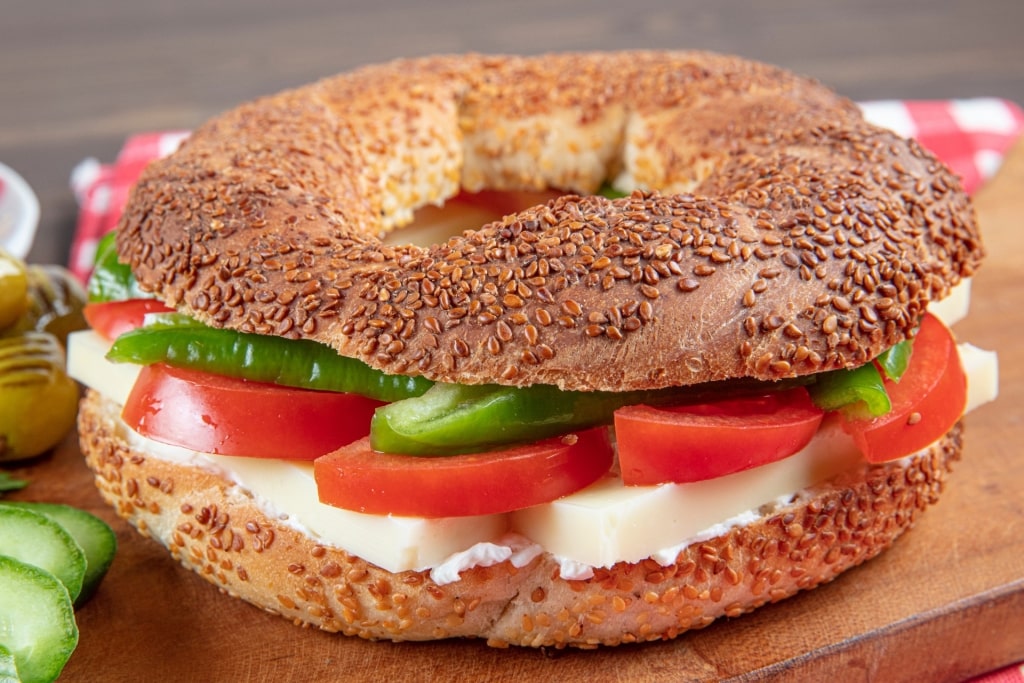
Simit
That lack of density means it is less suited to sandwiches than a bagel. It is eaten with cheese, or preserves—even Nutella—for breakfast, or pieces are torn off to eat with dips such as humus.
Katmer
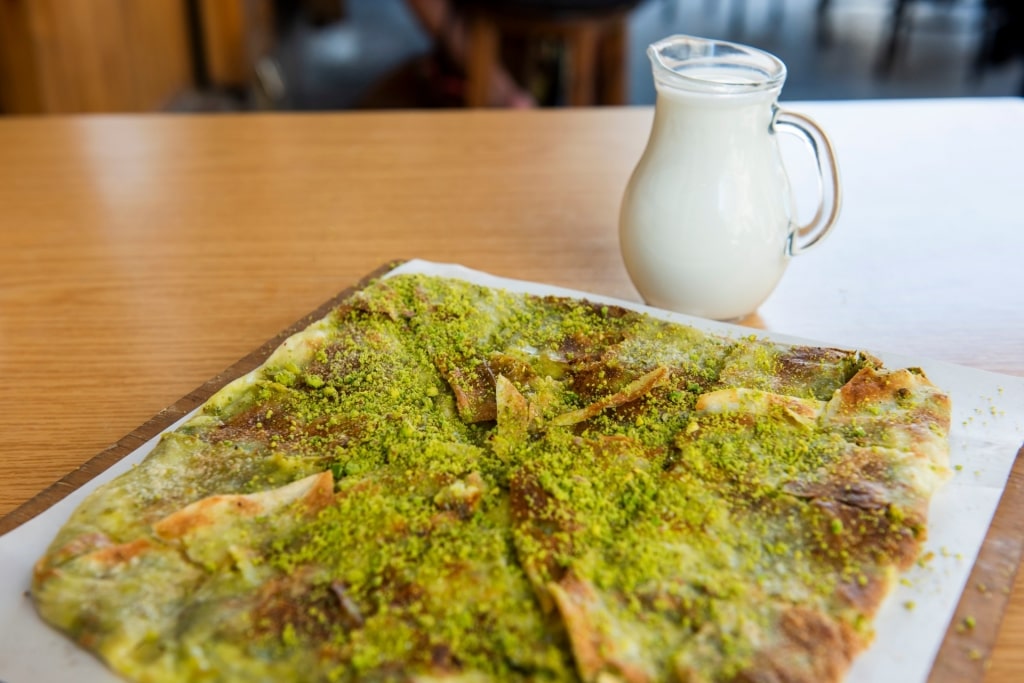
Katmer
If you don’t have a sweet tooth before coming to Istanbul, you could very well leave with one. Of the many instantly addictive treats you’ll encounter, katmer may top the list.
This is a dessert that is basically a pastry sheet filled with clotted cream (made with buffalo milk), and pistachios. Traditionally found on the breakfast table, it’s also delicious with a cup of tea at any point in the day.
A newly-married couple traditionally eat katmer for breakfast on their first morning as man and wife. Sent by the father of the groom, it’s a wish for a sweet marriage, and a symbolic energy booster.
Menemen
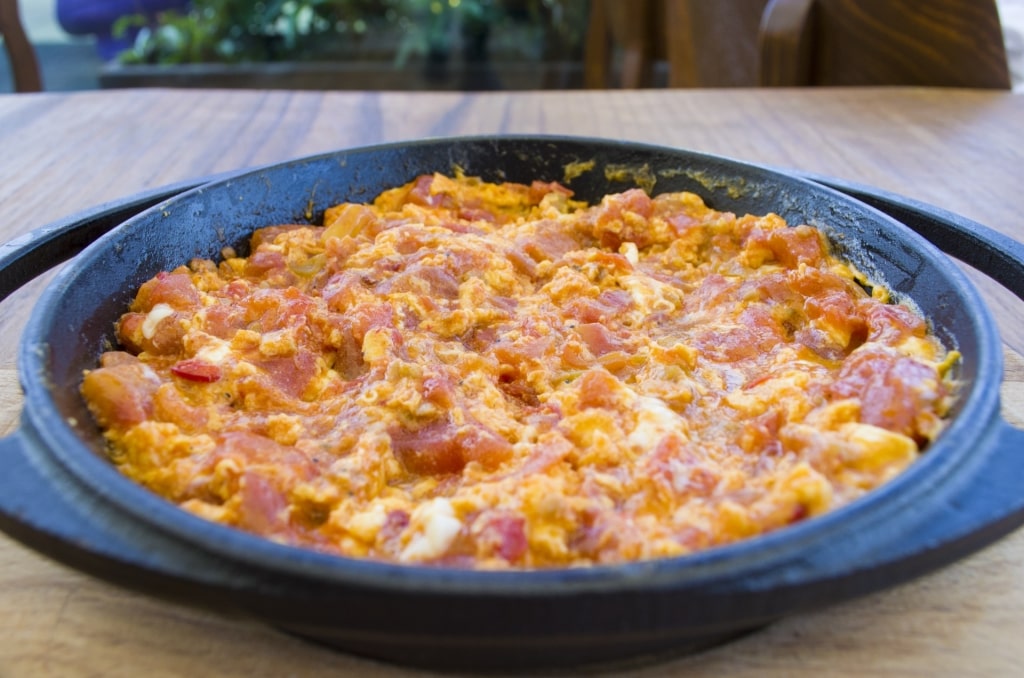
Menemen
This omelet-style dish makes for a great breakfast. It’s made with a mix of gently fried onions, green peppers, and tomatoes, which are then added to soft scrambled eggs.
Every cook will have their own preferred flavorings, but it’s best with lots of heat from pepper and/or chilis. Extra ingredients, such as cheese, sausage, mushroom etc may also be added.
The dish takes its name from a small town near Izmir, in a region famous for its tomatoes. Onions are a later addition, and their use is still contentious among the many fans of the dish.
Sucuklu Yumurta
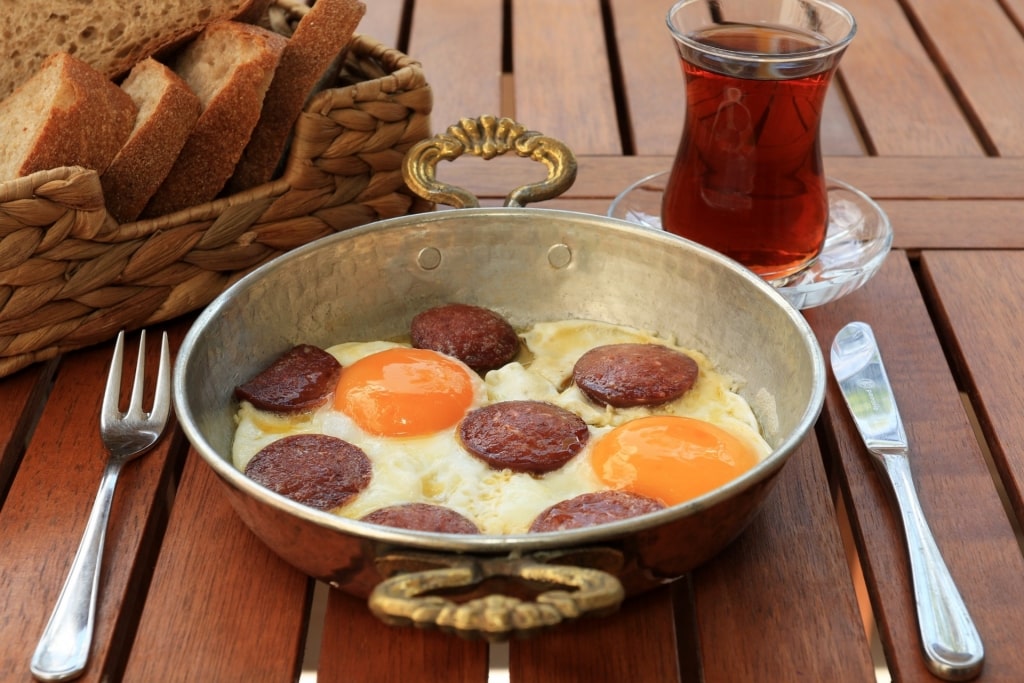
Sucuklu yumurta
Another popular breakfast treat, this spicy dried sausage is made with ground beef, well flavored with garlic and spices. It’s fried, then eggs are added before the whole is usually served in the pan.
Presentation is key here, with thick slices of sausage sitting amid the fried eggs, whose yolks are still golden and runny. You help yourself to a portion, being careful not to break the yolk which is then a tasty dip for your bread.
The dish is rich enough to be normally confined to a Sunday lunch. However, it’s also a popular light lunch, usually served then as a portion for one.
Turkish Delight
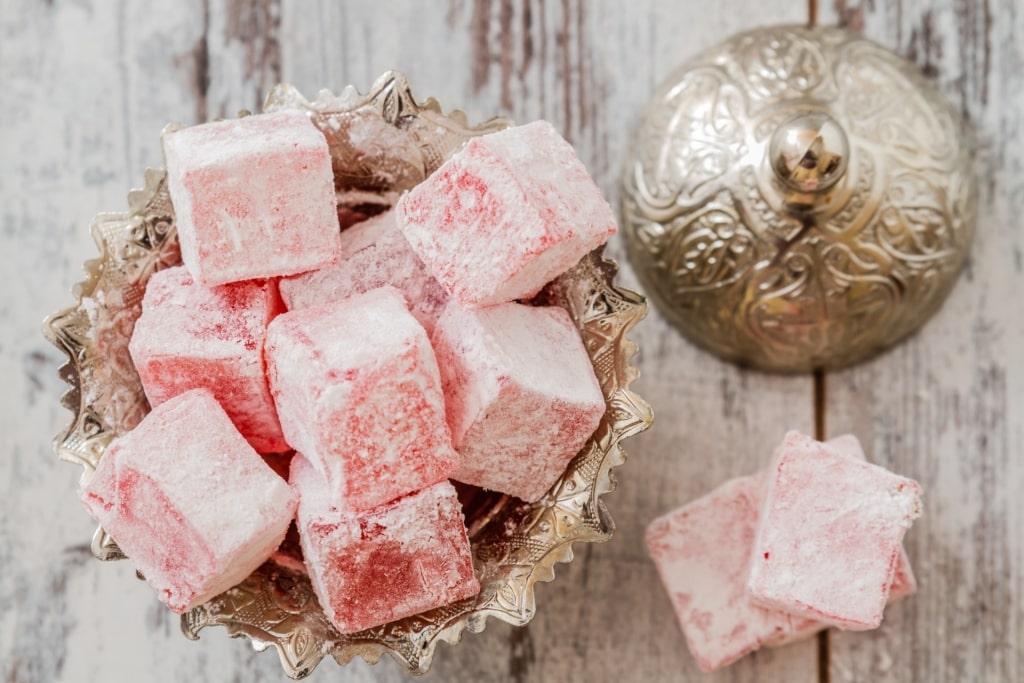
Turkish Delight
We are all familiar with Turkish Delight, the soft cubes of sugary gel flavored with everything from rosewater to mint. Commonly served at the end of meals as a treat, they also make a great souvenir from a visit to Istanbul.
The original name for them is rahat-ul hulkum, which means “soothe the throat”. An English traveler dubbed them “Turkish Delight” in the 1700s, and they have been one of the world’s favorite desserts since at least then.
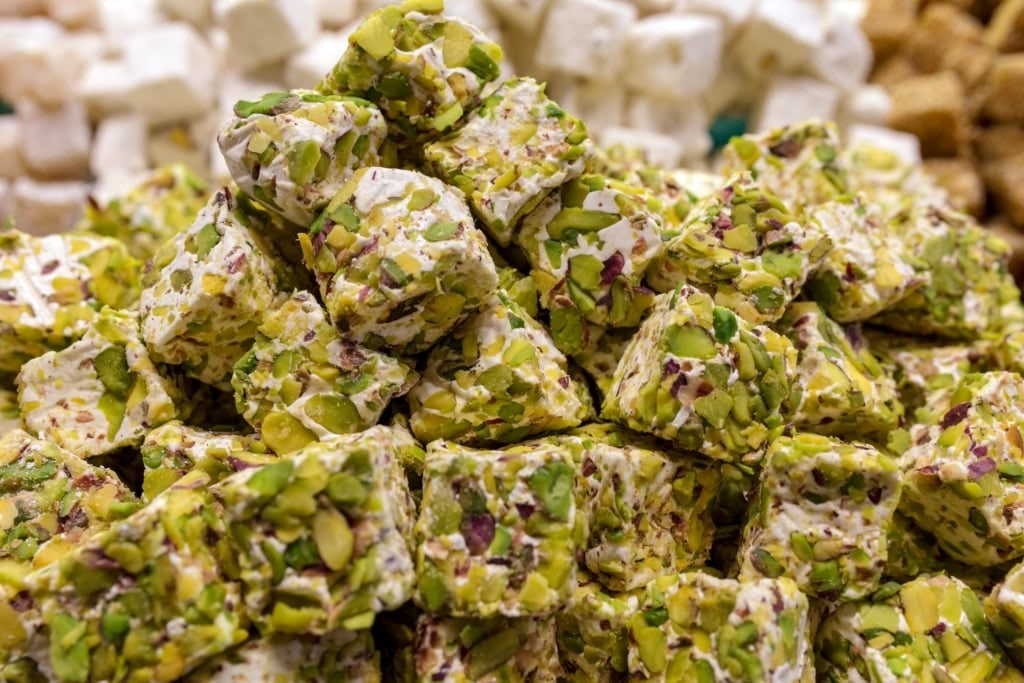
Turkish Delight
Now known simply as lokum in Turkey, the most popular flavor is pistachio. Whatever flavor you taste, you’ll find it a very different and superior experience from anything you may have tasted outside Turkey.
Börek

Börek
Börek is a dish of filo pastry with a filling of meat, cheese or vegetables. Baked or fried, it’s often eaten for breakfast.
Finding a pastry shop selling a good börek could start you on a wonderful culinary journey through Istanbul. They come in a near-endless variety of shapes, sizes, and flavors.

Ciğ börek
Interesting variations include çiğ börek, where the dough is folded over into a calzone-type parcel, and deep fried. The filling is normally ground beef, with onions, spices, and sometimes, cheese.
Other fillings might be anything from spinach with yogurt, or potato, to ground lamb with raisins, or even chocolate. That last might not actually qualify as börek, but you’re free to make your own judgment.
Doner Kebab
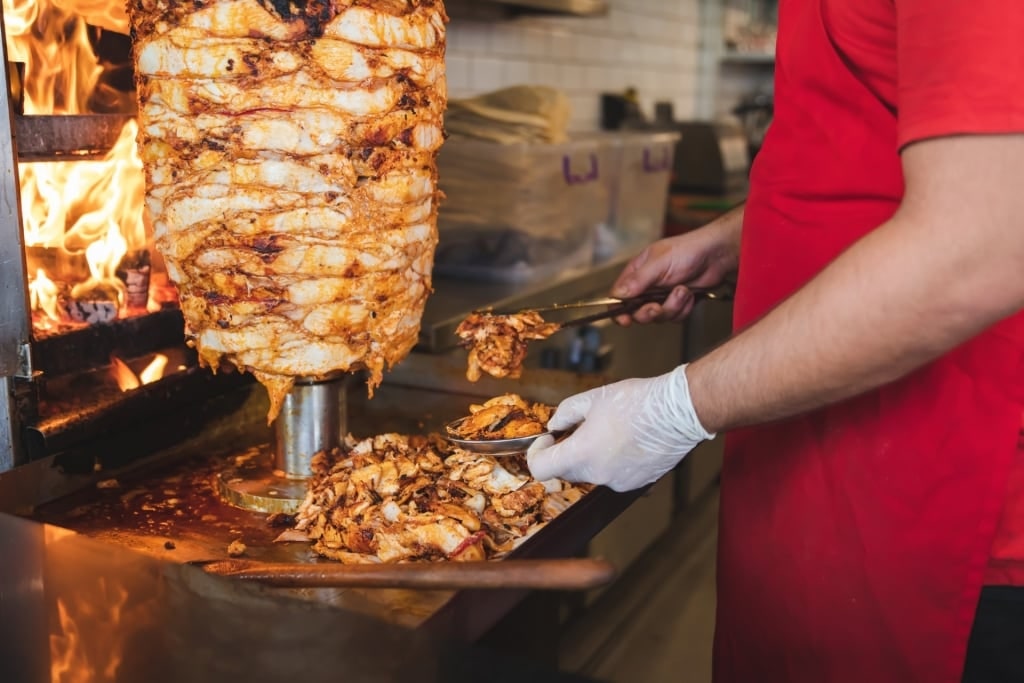
Doner kebab
Arguably the national dish of Turkey, kebab is meat, usually lamb, grilled on a skewer. Its ancient roots can be seen in the prevalence of kebab restaurants among all the historical districts of Istanbul.
Such an old dish has naturally evolved into many variations. “Doner” kebab refers to a rotating spit, while “shish” kebab is a skewer of meat, peppers, onions, and tomato.
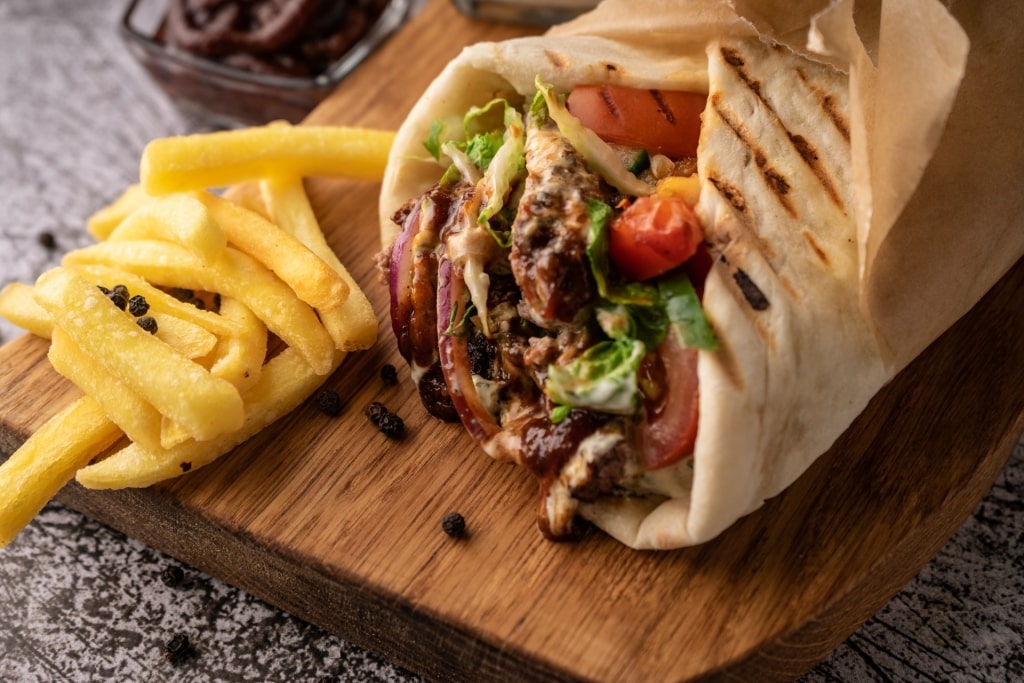
Doner kebab
Doner is best served in slices sandwiched in pide/pita bread, with sides such as salad, french fries, or grilled peppers. A popular variation is “Iskender” kebab, when the meat is topped with a tomato and butter sauce.
In Istanbul, look for a kebab/kebap restaurant with “Ocakbaşı” in the name. Meaning “fireside”, these give you a ringside seat to watch the action at the grill.
Read: Best Beaches In & Around Istanbul
Kuzu Tandir
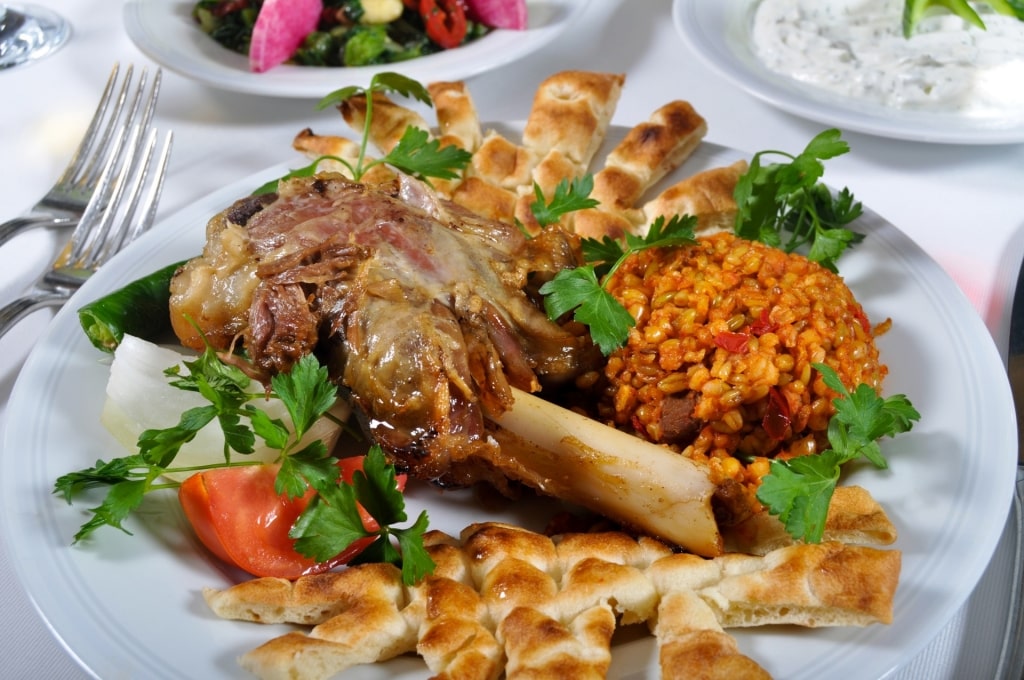
Kuzu tandir
The tandir, or tandoor, is a traditional “pit” oven that gives its name to a dish of whole meat cooked in it. Kuzu tandir, roast lamb, may be Turkey’s most popular (and best) dish.
The lamb is seasoned with salt, pepper, herbs, and served with rice. You will also find beef, and chicken cooked in the tandir.
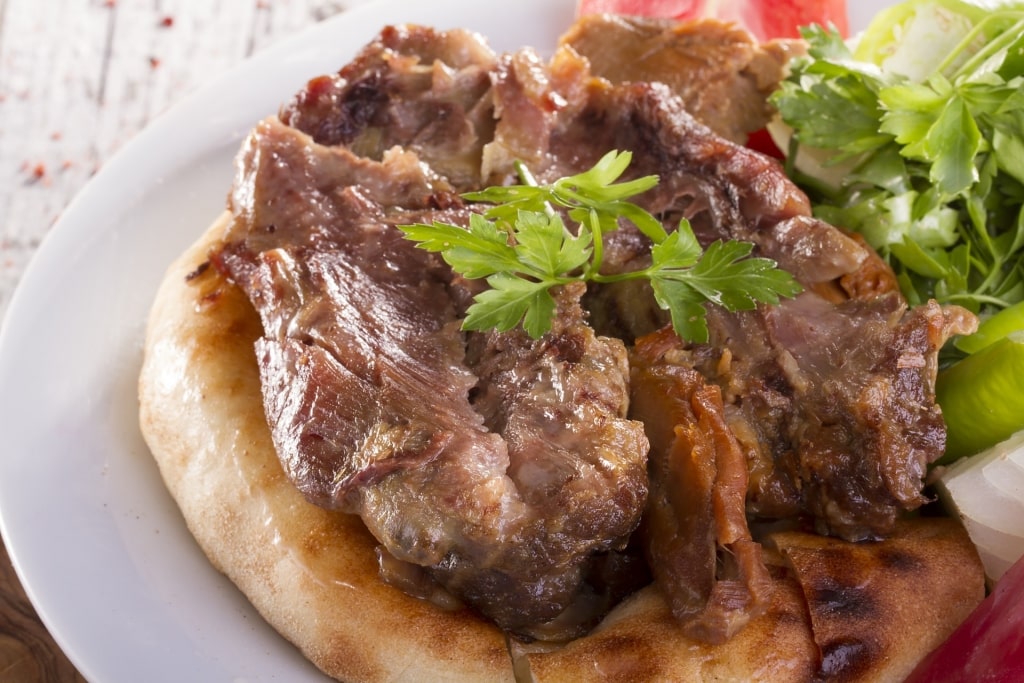
Kuzu tandir
Traditionally, a whole lamb is used, with the juices used to baste the meat during the cooking process. Served on a piece of bread, that gains flavor by soaking up the juices as well.
The meat should be falling off the bone when served. During the cooking process, the fat is also crisped to make a form of crackling or grillons.
Tantuni
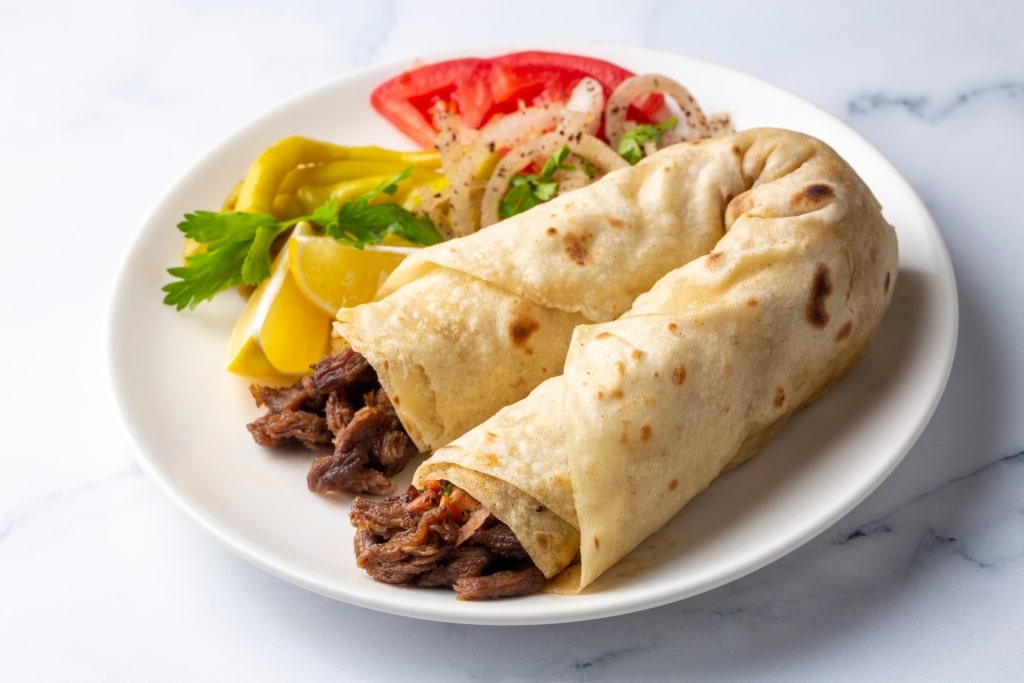
Tantuni
Tantuni is a wrap of meat, with skinless tomatoes, onion, and parsley. The meat is lamb, or chicken, chopped or sliced, and then stir-fried with spices.
Served with a squeeze of lemon, and pickled pepper, it’s become more popular in recent years. A specialty of the city of Mersin, tantuni is seen as healthier than a kebab or hamburger.
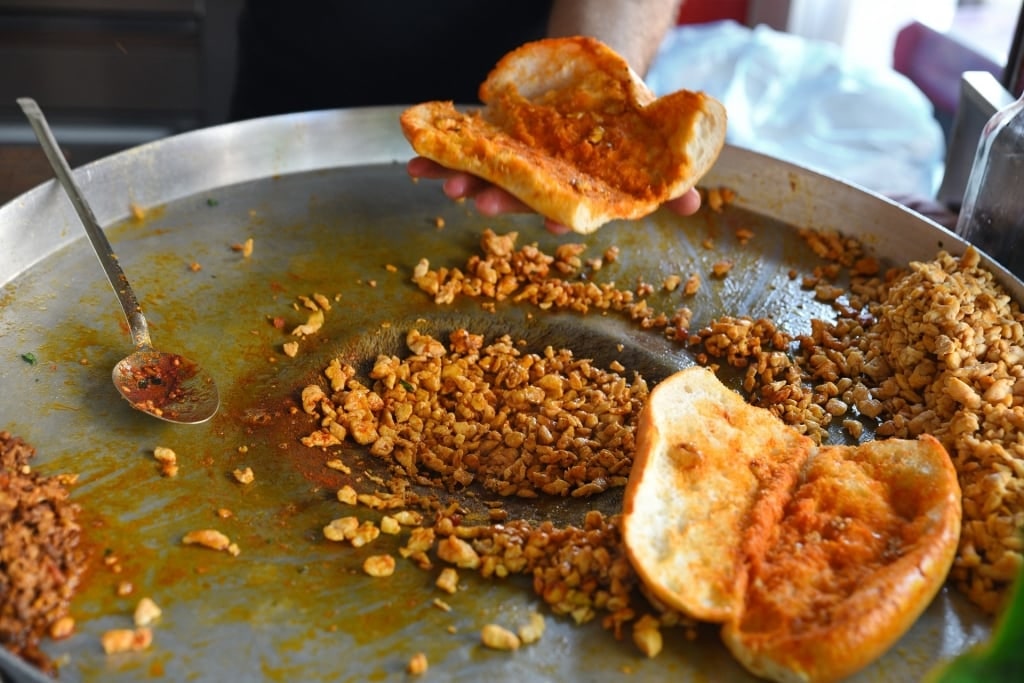
Tantuni
Tatuni is fried in a special pan, with a bowled center. After cooking in the bowl, the meat can be kept warm on the outside while everything else is being prepared.
It’s very common to have tantuni with ayran, a yogurt drink now recognized as Turkey’s official national drink. With a refreshing sour taste, ayran is very cooling in hot weather.
Köfte Ekmek

Köfte ekmek
Another common street food, this is a dish of meatballs in bread. The meat is heavily flavored with pepper, cumin, and other spices.
Every region of Turkey has its own köfte recipe. Variations include the meat used (lamb is traditional), the shape of the meatball, the bread, and, of course, the spices and toppings.

Köfte ekmek
The word köfte comes from Persian, and means “to grind” (ekmek means “bread”). So meat is not an essential ingredient, which is good news for vegetarians who will find lentil or potato options are among the best things to eat in Istanbul.
Köfte ekmek is a favored food of soccer fans on match days. Look for a nearby football stadium to find the very best places to eat this popular dish in Istanbul.
Manti
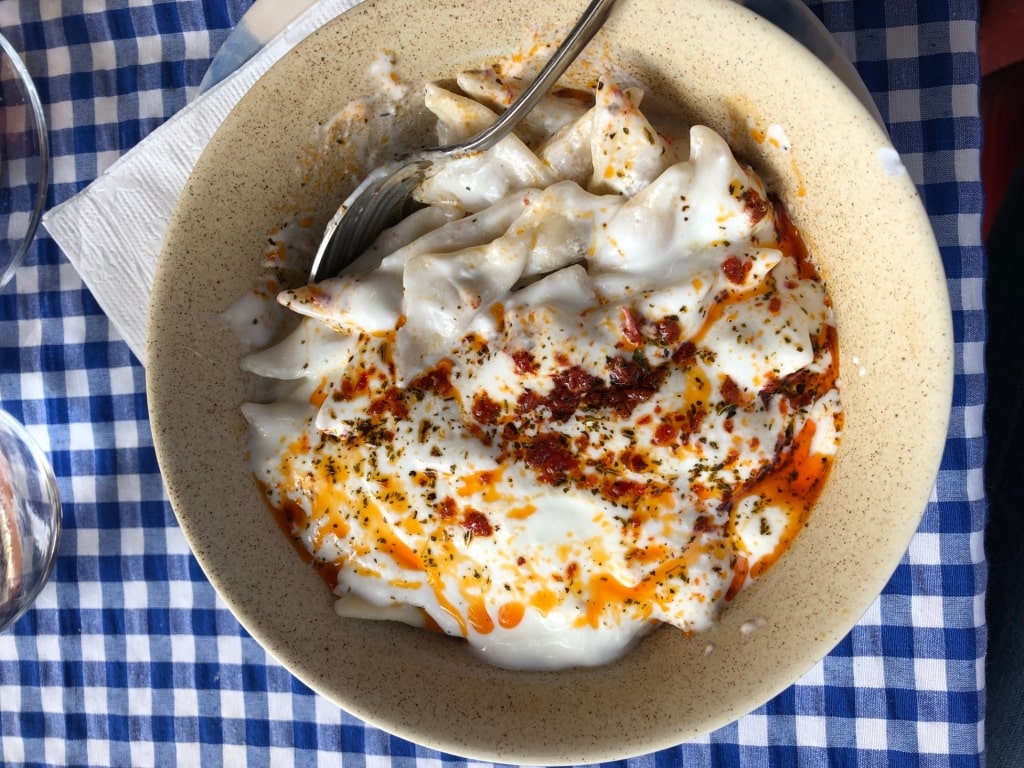
Manti
A form of pierogi or ravioli, these delicious dumplings are served hot with a dressing of cold yogurt and garlic. The filling is traditionally made from ground lamb flavored simply with onion, salt, and pepper, although many other variations now exist.
The pastry is simply flour mixed with water, and sometimes egg. Great skill is needed in rolling the pastry as thin as possible.
The manti is then boiled in water or tomato sauce, or it can be baked. Yogurt with garlic, or tomato sauce, is the usual dressing for these very more-ish dumplings.
Kumpir
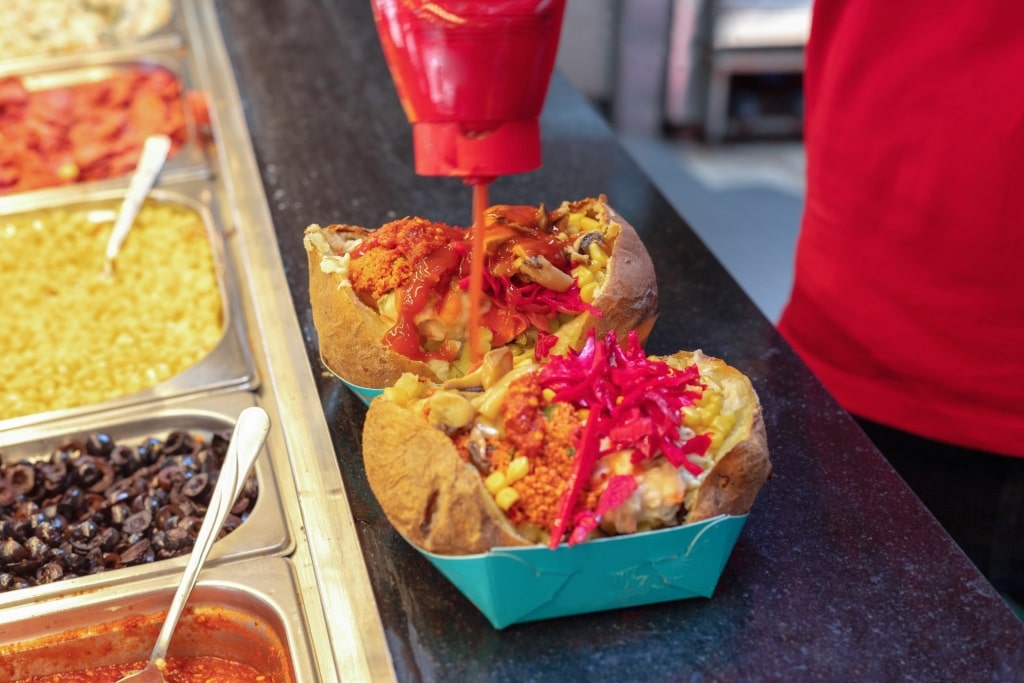
Kumpir
Kumpir should be familiar to anyone, as it’s a baked potato, with a tasty topping. This Turkish version favors a base filling of garlic butter and cheese.
The whole potato is baked in its skin, then the inside is pureed with the butter and cheese. The preferred cheese is kaşar (kayseri), a semi-hard sheep/goat’s cheese similar to mozzarella.
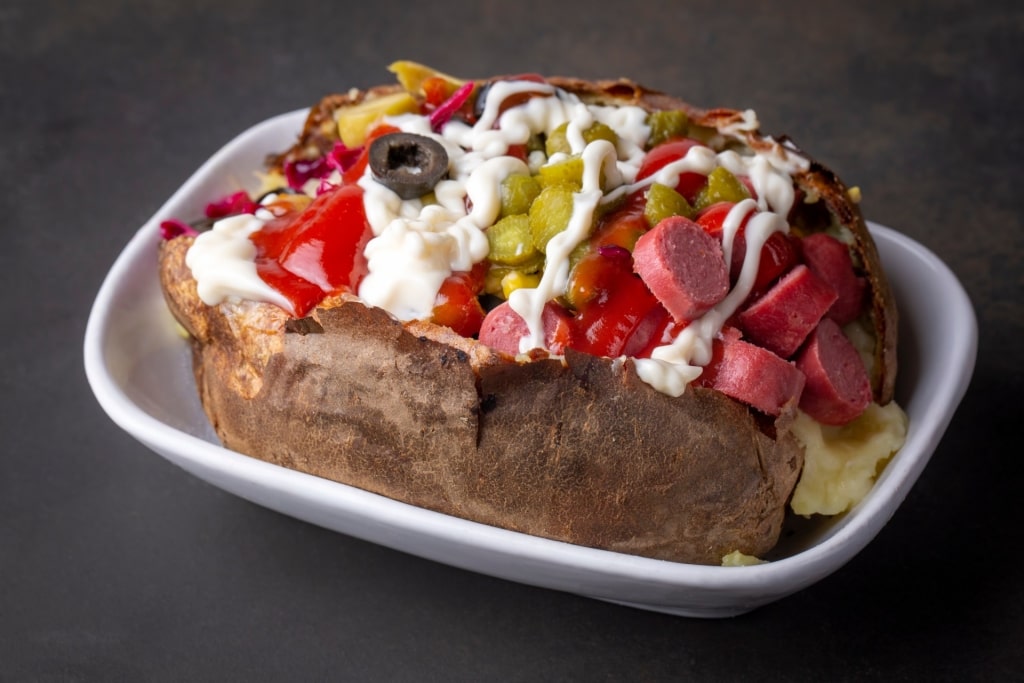
Kumpir
On top then goes anything that the cook’s imagination can come up with. This is a delicious, cheap street food, and you’ll find a bewildering choice of toppings at any stall.
Choices might include pickles, vegetable salad, corn, peas, salami, french fries, and onion. Like a hotdog, lashings of dressing is almost obligatory.
Lahmacun
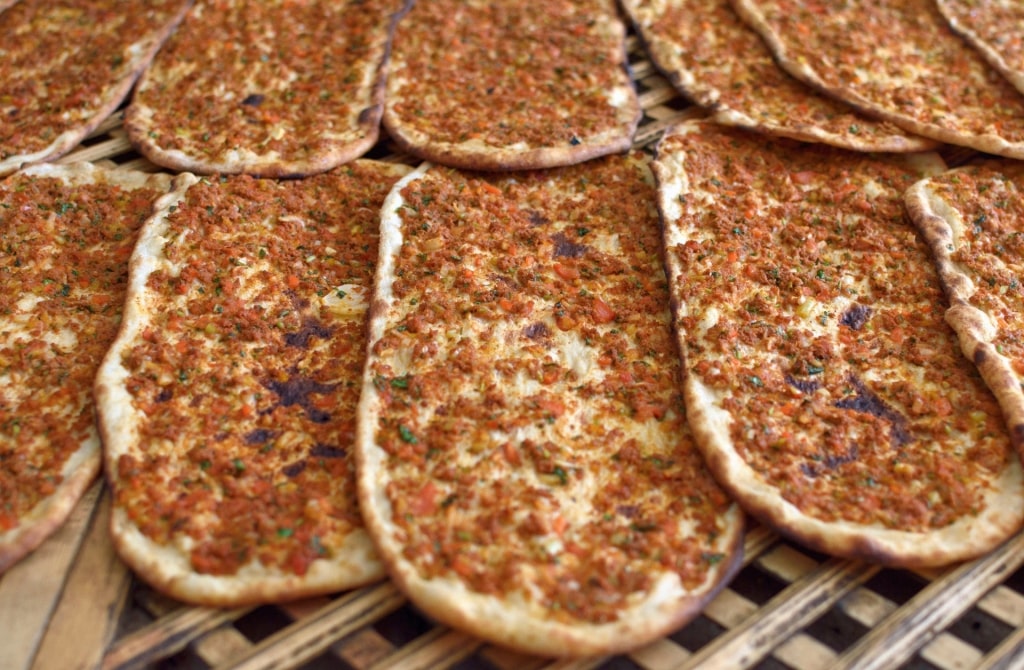
Lahmacun
One of Istanbul’s most popular street foods, and many a visitor’s instant fix to the question of what to eat in Istanbul, lamachun is a pizza-style dish. A round of crispy bread is baked with a spicy topping of tomatoes, and ground meat, usually beef or lamb.
The topping will probably also include chopped onions or garlic (never both), and parsley—but definitely no cheese. A final quick dash of lemon juice adds to the fresh taste.
As well as stalls specializing in lahmacun, it’s also served up in lots of kebab shops. Each has its own variations, notably in the spiciness, but lahmacun is always rolled and eaten with your hands.
Halka Tatlisi
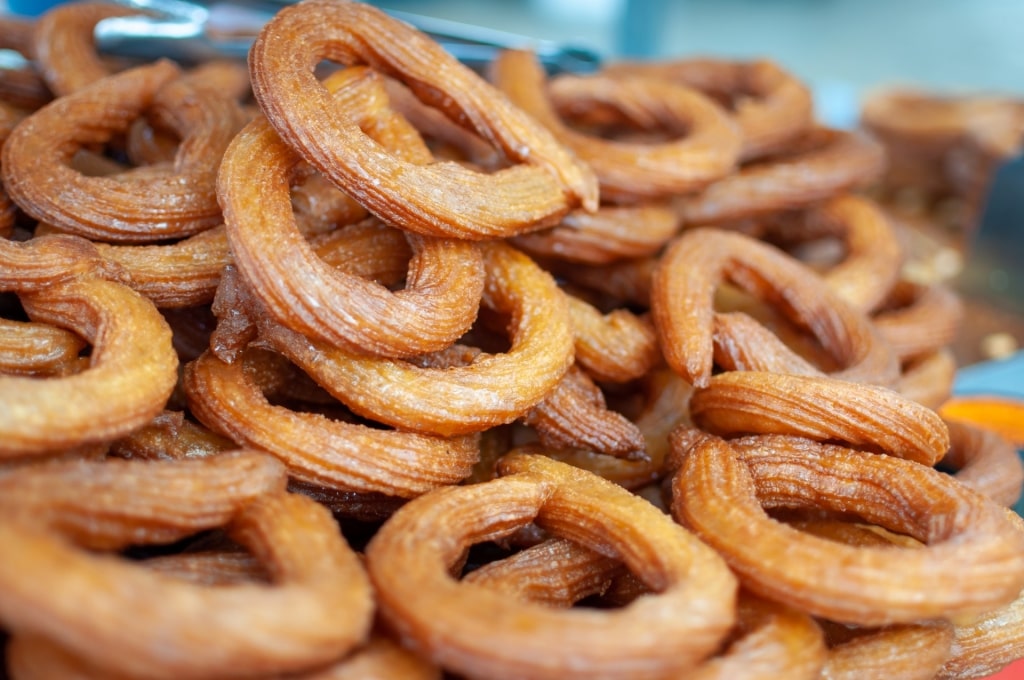
Halka tatlisi
If you’ve ever eaten a churro in Spain or a donut anywhere else, you’ll understand the idea of halka tatlisi. Take some dough, extrude it into a ring (halka tatlisi means “ring dessert”), then deep fry it, and drizzle it in sweet syrup.
This crispy delight is easily found throughout Istanbul as a high-energy street food. It’s served hot in a piece of paper to help soak up the oil as you eat it.
You’ll find it much sweeter than a churro, or donut. But it has the same slightly crispy exterior, and soft interior.
Pide
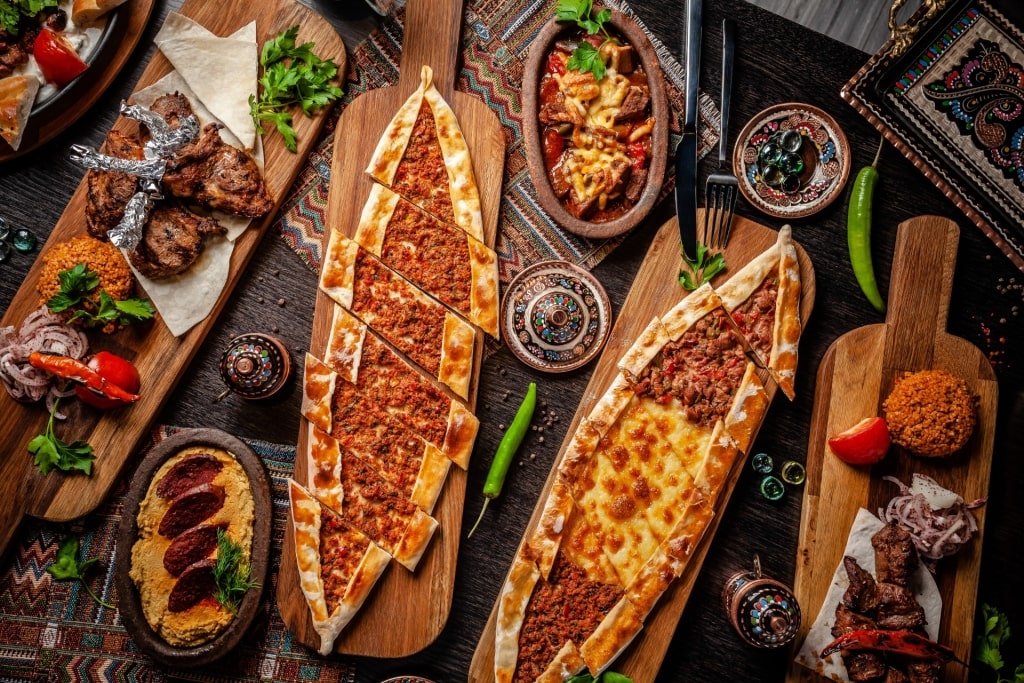
Pide
Pide is a pizza-style bread, traditionally made in a stone oven with a wood fire. It’s filled with ingredients such as meat, cheese, or spinach with a salt cheese.
The dough is kneaded into a long, thin shape before being rolled around the filling. The center is left open to create a boat-shaped opening, before the whole is quickly cooked in a very hot oven.
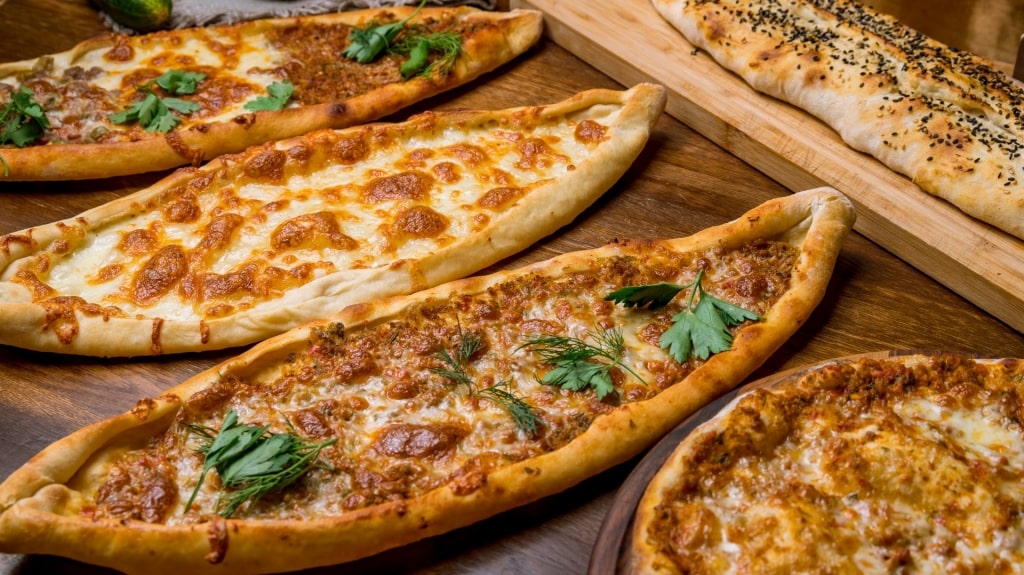
Pide
Pide is a good choice for vegetarians, as you can find many good options on the menu of any restaurant serving it. Like a pizza, the only real limit is the maker’s imagination.
The pide is usually cut into slices for sharing, so friends might order a selection to try each. Be warned that pide differs from lahmacun in that it’s much heavier with more filling.
Midye Dolma
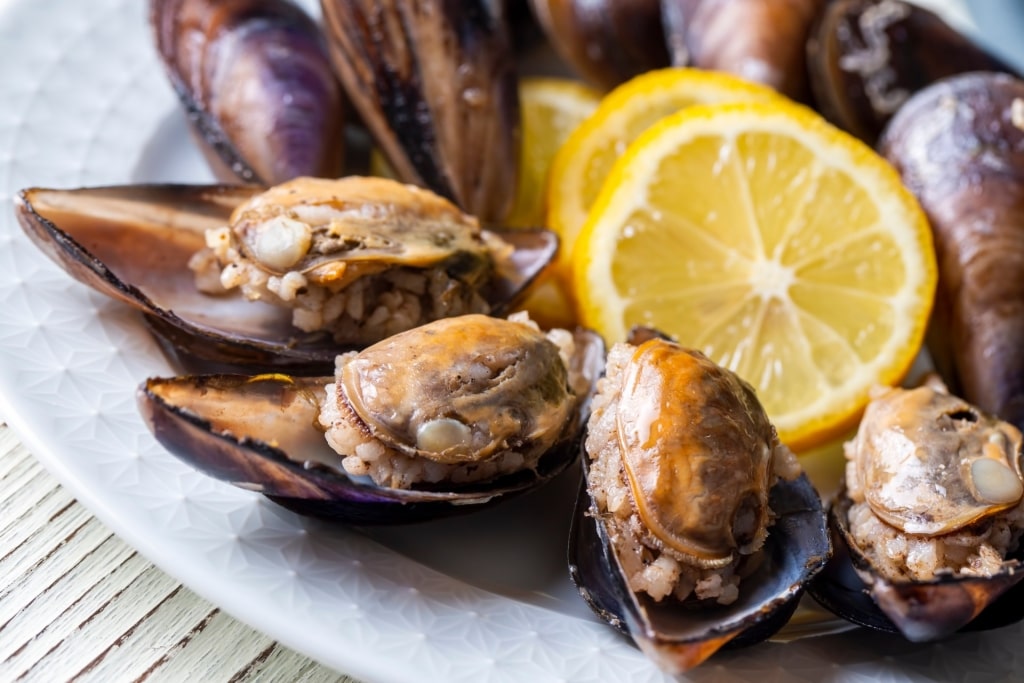
Midye dolma
Kurds have long been the traditional mussel sellers of Istanbul. They introduced this popular evening snack to Istanbul’s streets as recently as the 1980s.
The mussels are found in two styles: stuffed, and fried. Midye dolma are mussels stuffed with a mix of rice, and onions, flavored with spices such as cinnamon.
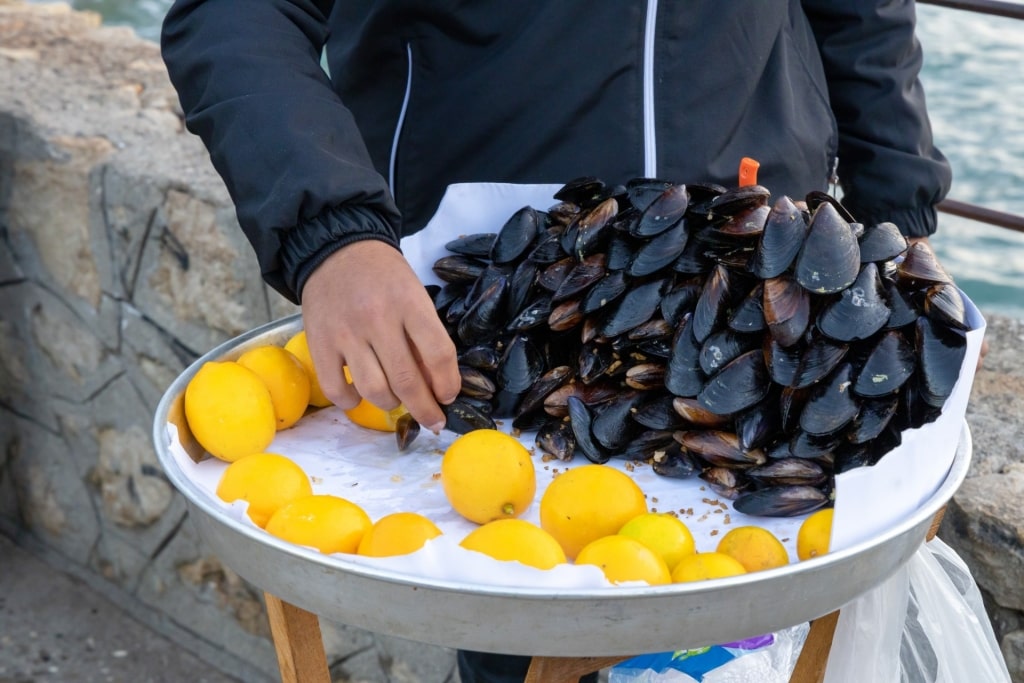
Midye dolma
Nowadays, as well as being a popular street food, midye dolma has found its way onto restaurant menus. Served on the half-shell, it’s a main course, or a tapas-style snack for an evening of drinking.
The fried version, midye tava, is deep fried in batter, and served with a garlic dip.
Read: Best Neighborhoods in Istanbul to Explore
Baklava
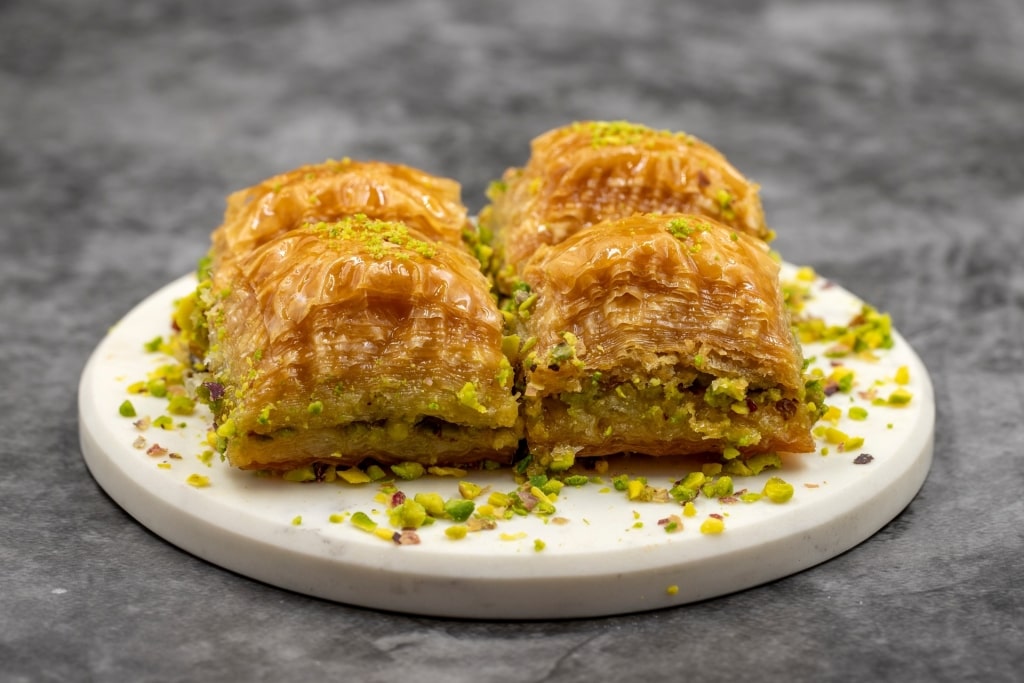
Baklava
Anyone with a sweet tooth is already familiar with baklava. This dessert made from fine layers of filo dough, filled with nuts and soaked in sugar syrup is now common around the world.
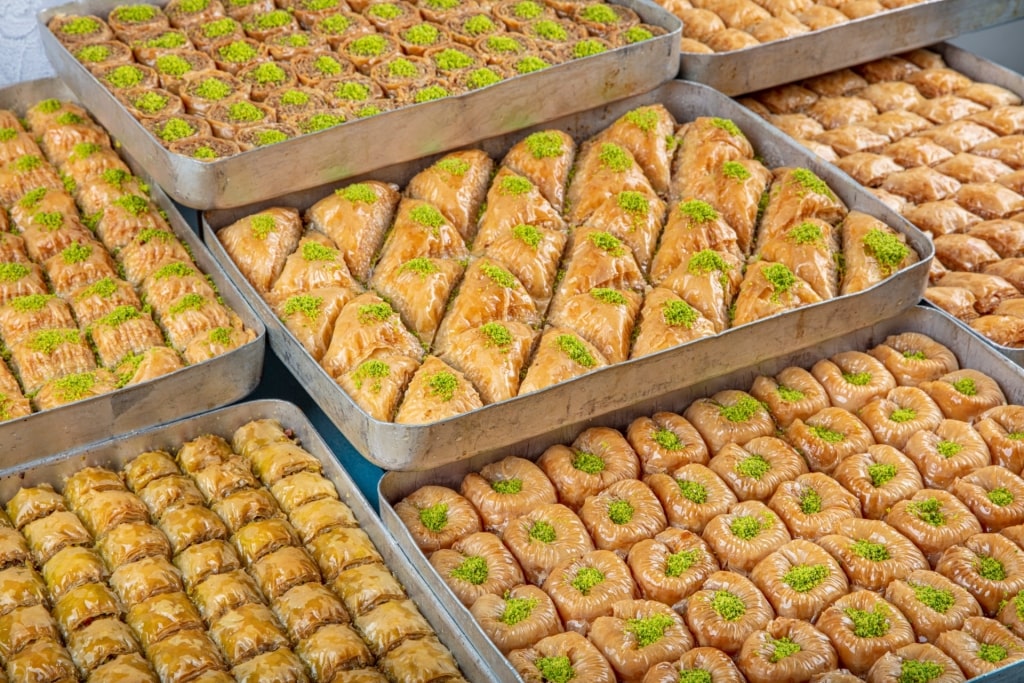
Baklava
Such a famous dessert obviously has many competing claims for its origins. It may be Asian, possibly Greek or Byzantine, and even Arab.
However, there is no doubt that it reached perfection in Turkey, and particularly in Topkapi Palace, one of the best places to visit in Istanbul. The many pastry shops of Istanbul carry on a tradition that is rich in several senses of the word.
Kunefe
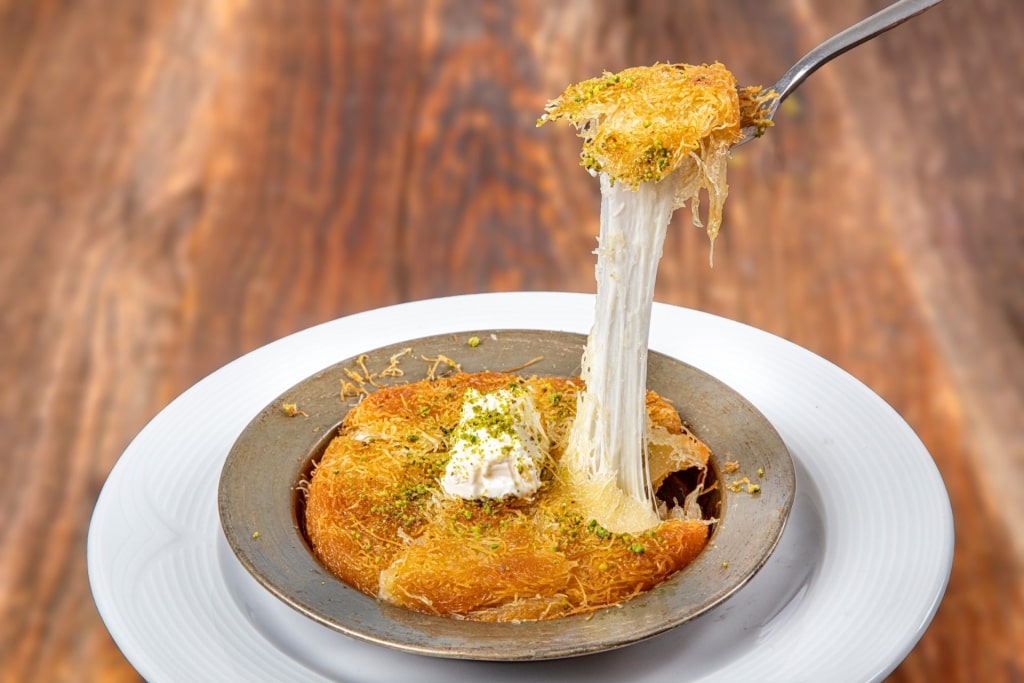
Kunefe
A vaguely healthy dessert, by Turkish standards, kunefe is a filo pastry dish with cheese. Unsalted cheese is layered between the dough, then baked and served with a soaking of sugar syrup.
Of course, things don’t stop there. There is inevitably a sprinkling of pistachio on top, not to mention normally a generous portion of cream or ice cream on the side.
There are, however, dozens of variations to that simple basic recipe. Key to it is the way the gooey texture of the melted cheese contrasts with the crisp pastry, and sweetness of the sugar.
Read: Sensational Markets to Visit in Istanbul
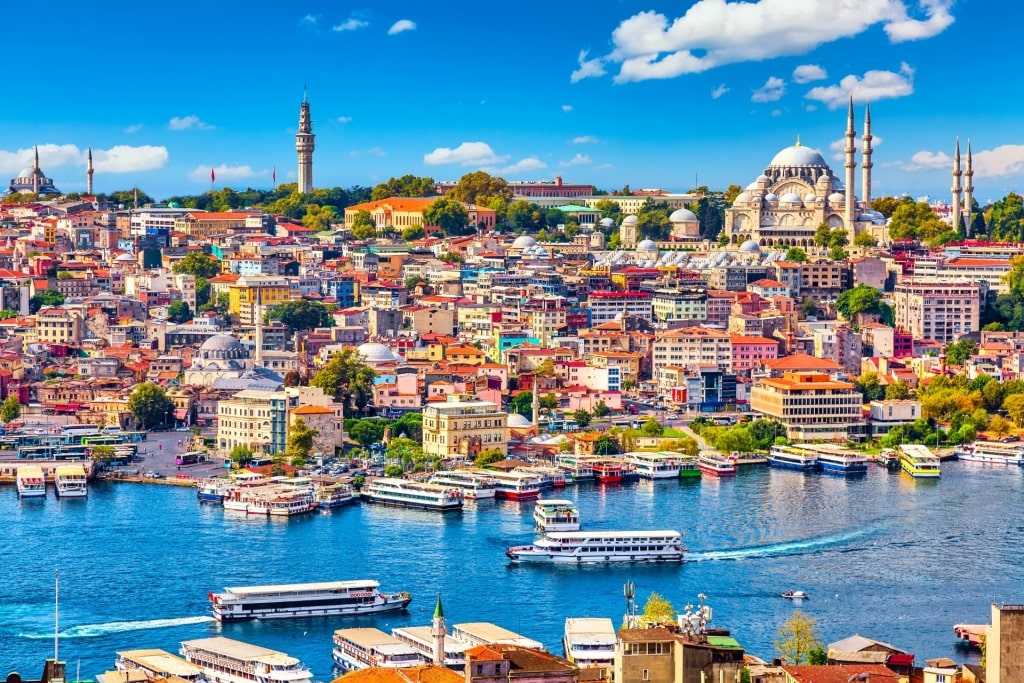
Istanbul
Has this guide to the best food in Istanbul whetted your appetite for a visit? Then why not browse Celebrity’s cruises to Istanbul to find the perfect itinerary for you and your loved ones?
